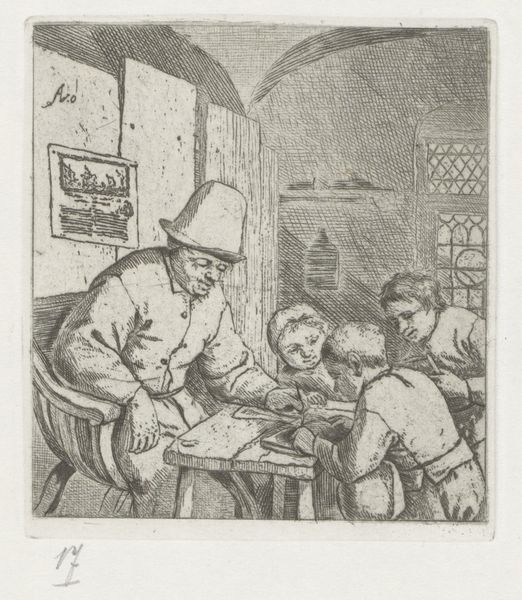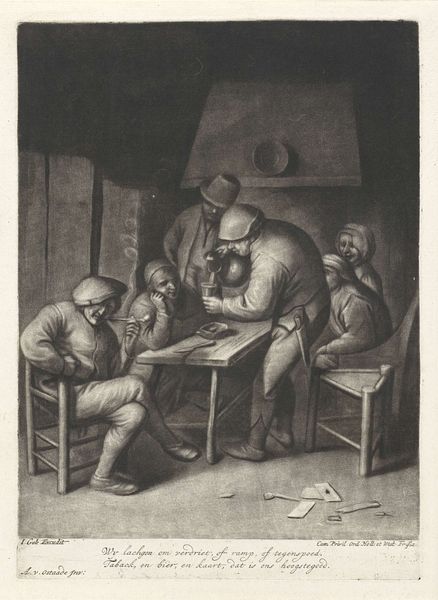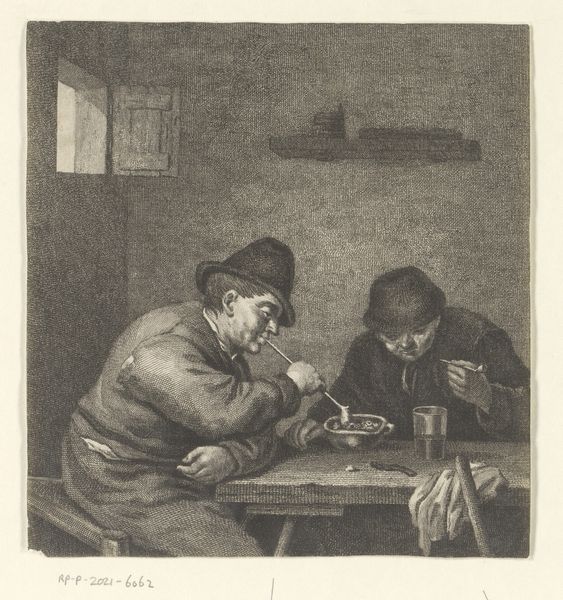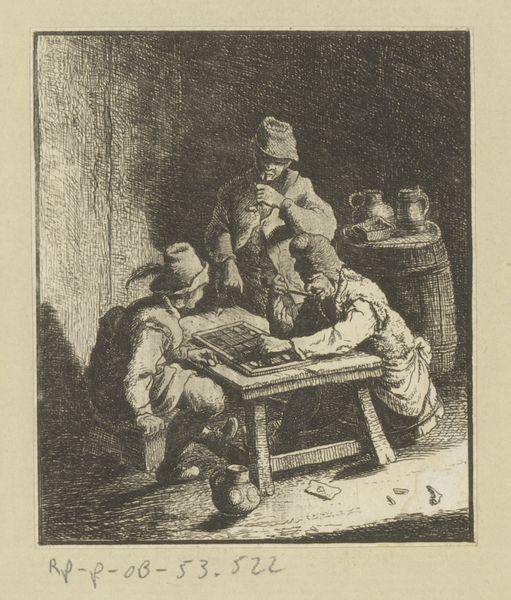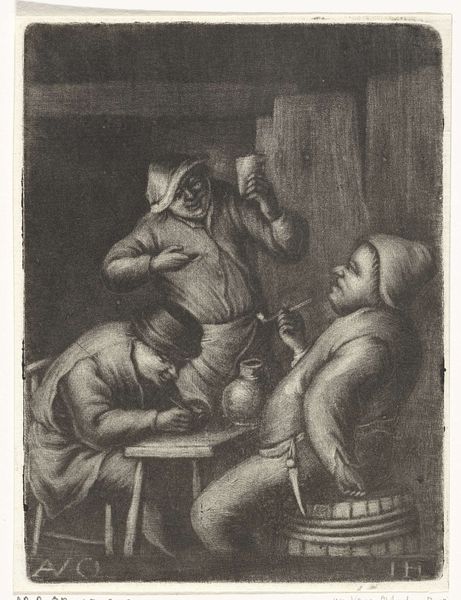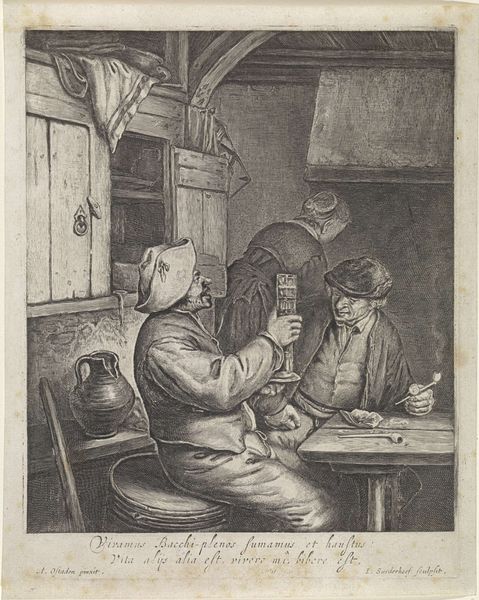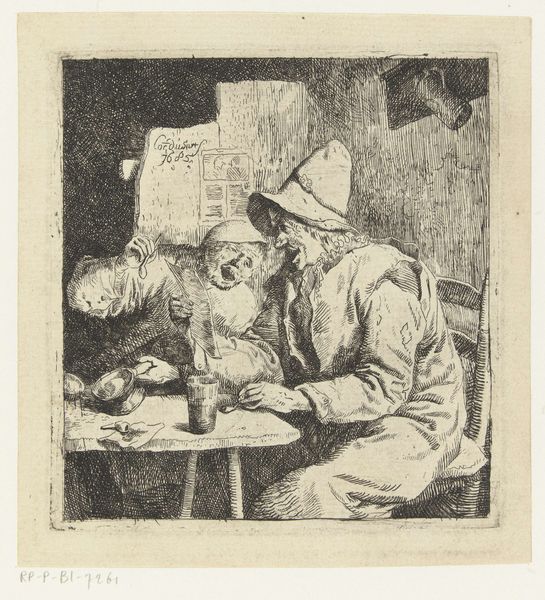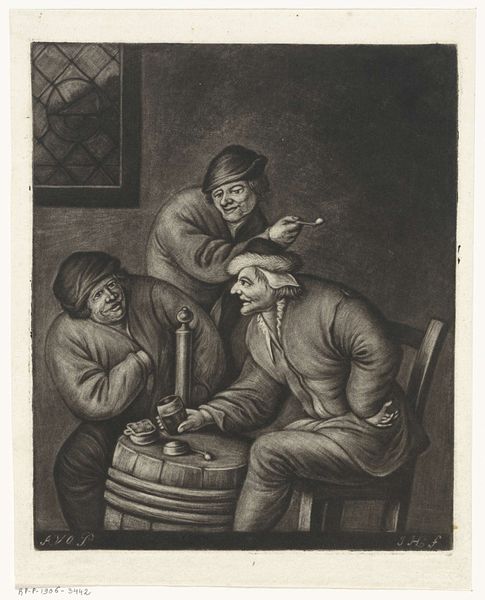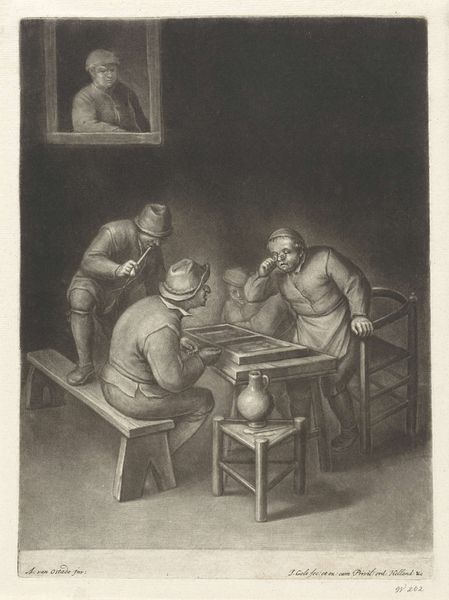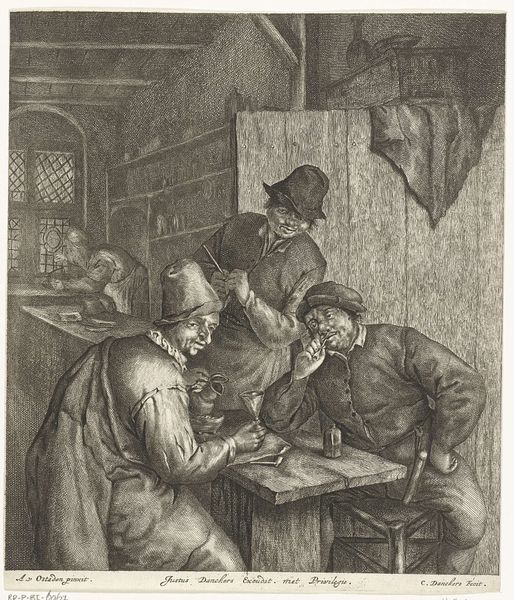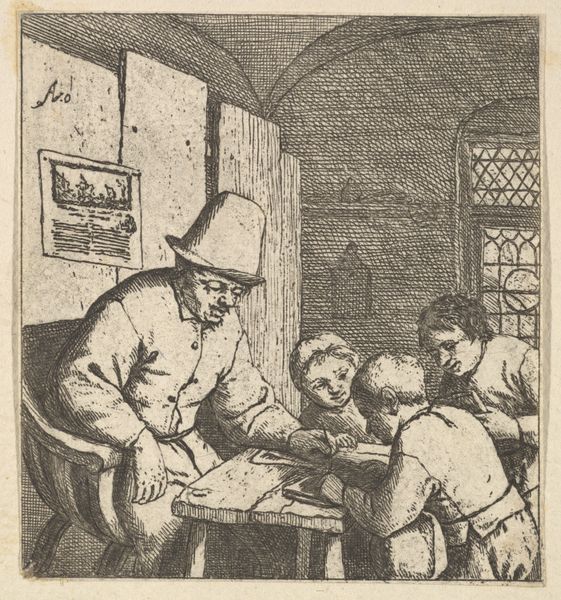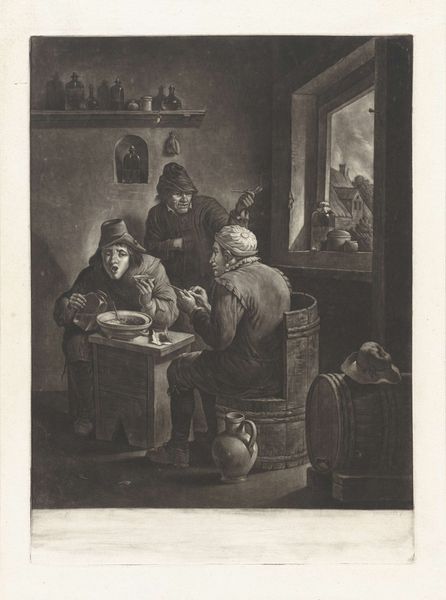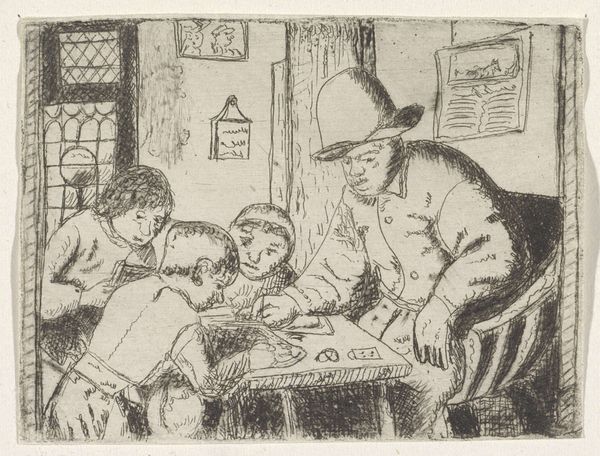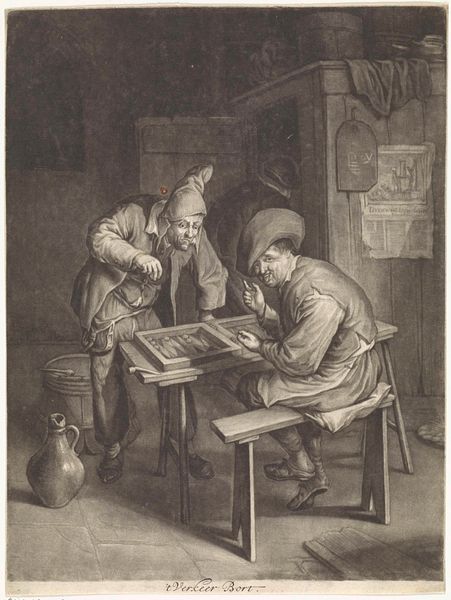
drawing, lithograph, print, etching, pencil
#
portrait
#
drawing
#
lithograph
# print
#
etching
#
pencil drawing
#
pencil
#
sketchbook drawing
#
genre-painting
#
academic-art
Dimensions: height 113 mm, width 93 mm
Copyright: Rijks Museum: Open Domain
Editor: So, this is "Schoolmeester" by Jacob Hoolaart, sometime between 1723 and 1789. It looks like it's made using a few different printing techniques: etching, lithography and possibly some pencil. There's an interesting, almost harsh light and I am curious as to the economic reality it conveys. How would you interpret this work? Curator: Let’s think about the context of production here. This print combines etching and lithography. That combination, that *process*, already speaks to shifting methods, a possible desire to blend cheaper, more accessible techniques with established ones. The subject matter is the "Schoolmeester" or schoolteacher. Is this print meant for mass consumption? What kind of labour went into producing multiple copies and to whom were these distributed? Editor: That’s a great point about blending techniques suggesting a more accessible approach. I was drawn to the detail but hadn't considered that in relation to the print-making process. It makes me wonder if there were different editions? Curator: Possibly, and it's useful to think of distribution networks: were these sold individually, bound in books? Who had access to education and who controlled the image production itself? Notice the children gathered around the table. What does this scene of learning, presented via accessible printing methods, tell us about education and societal values at the time of its making? What does it hide from our view? Editor: It’s almost like a democratization of both art and education happening simultaneously. Thinking about materiality and process has really opened up the reading of this print for me. Curator: Exactly. By examining the materials and production, we’ve touched upon the social dynamics of access, knowledge, and even artistic hierarchies in 18th-century society. The physical object holds the key to a broader understanding.
Comments
No comments
Be the first to comment and join the conversation on the ultimate creative platform.
